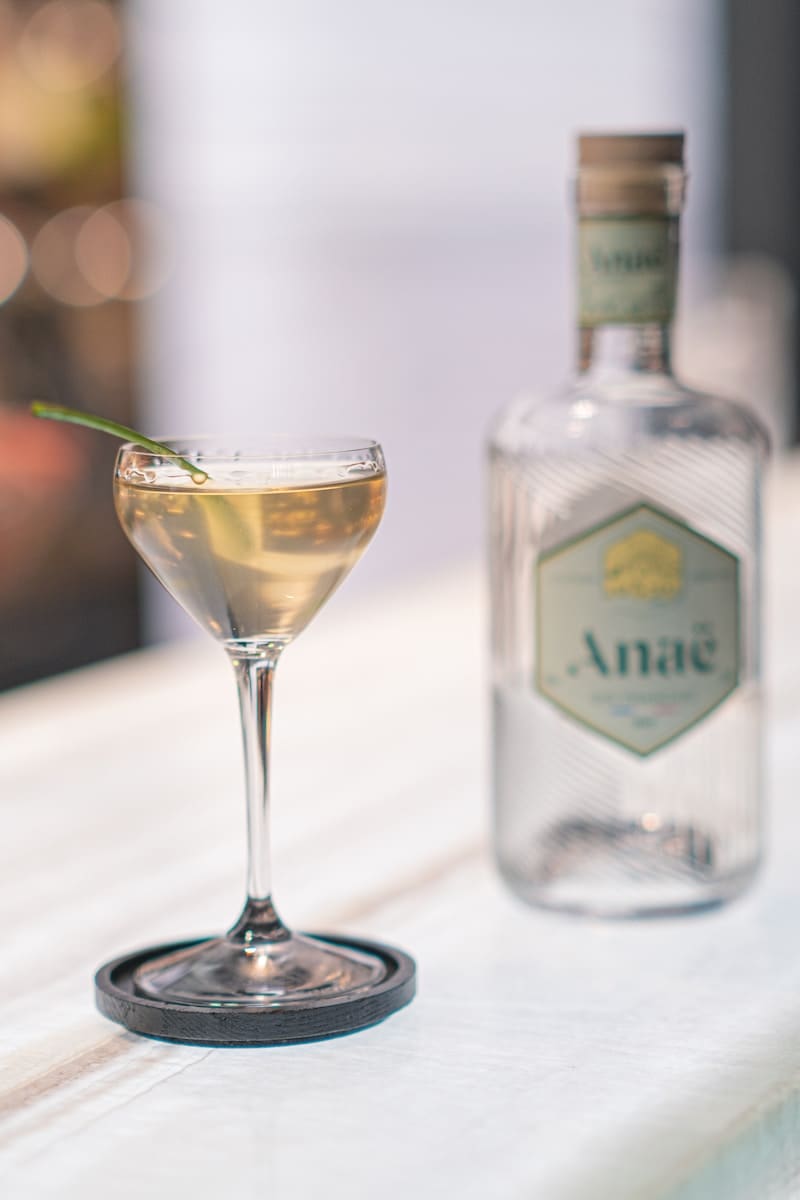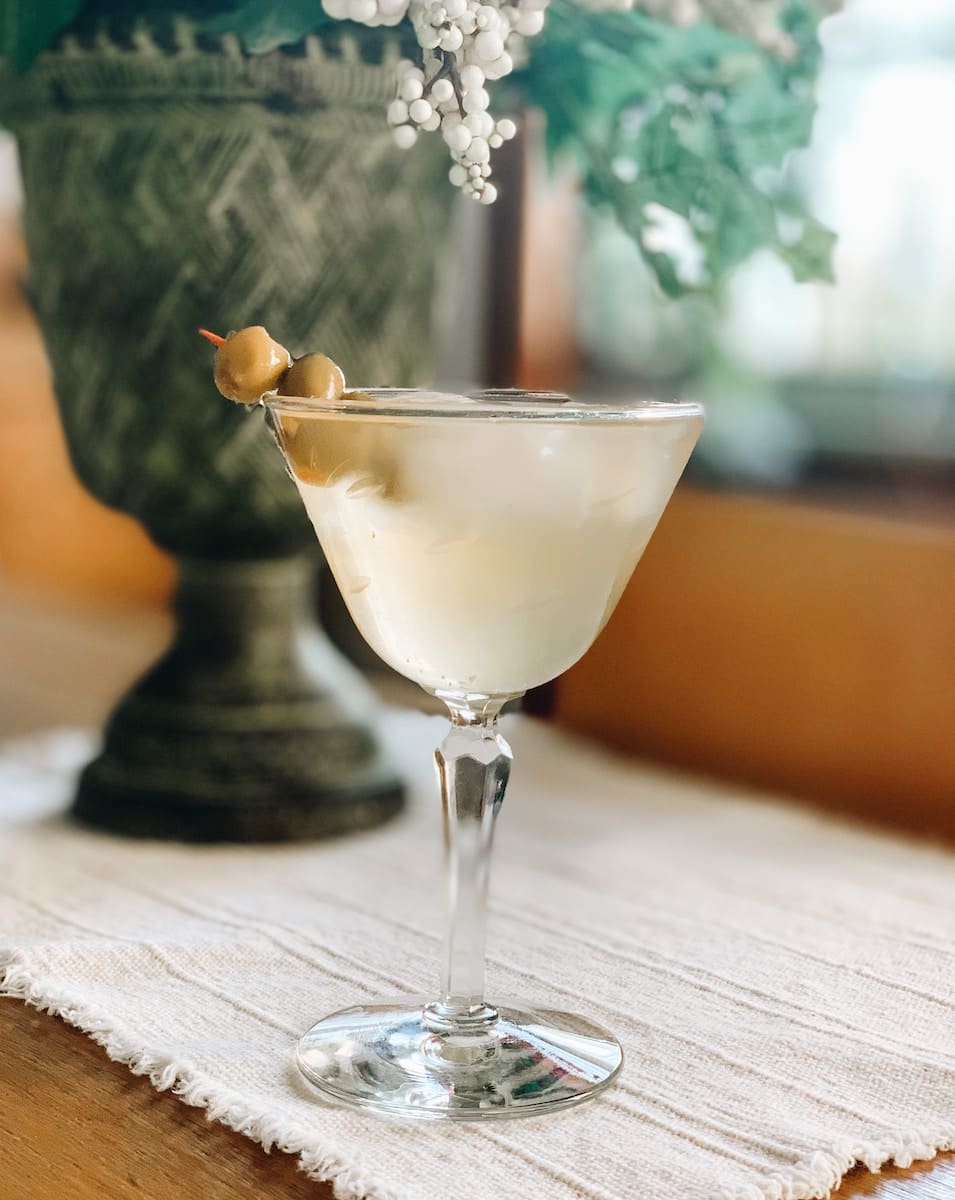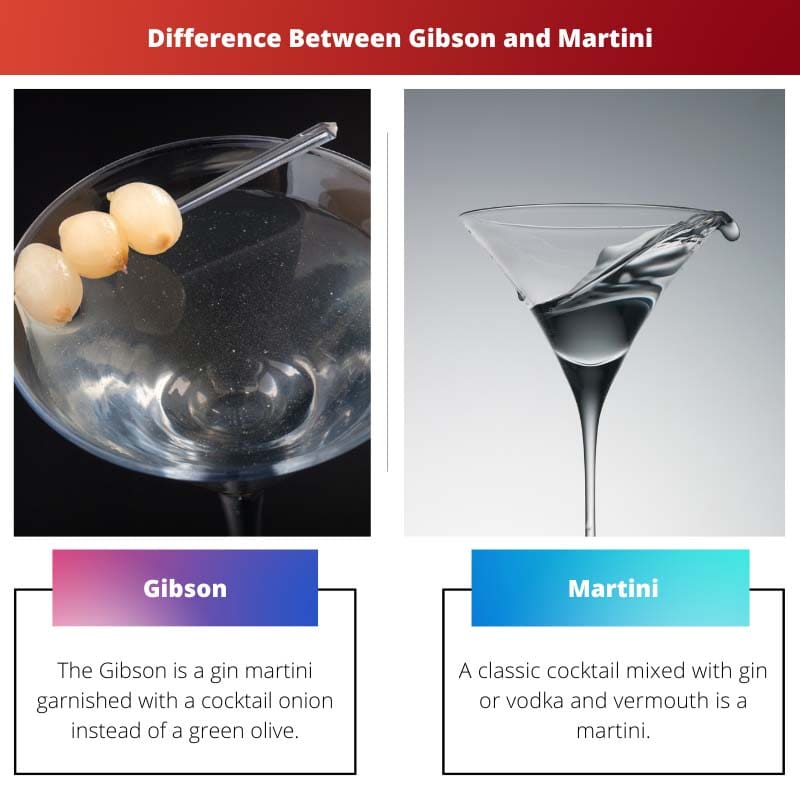Martini and Gibson are both drinks, with Gibson being a traditional Martini variation. The two cocktails are garnished when served cold is also different.
Gibson employs a cocktail onion as a garnish, while martinis use olive or a lemon twist. Gibson is also less alcoholic and sweeter tasting than Martini.
Key Takeaways
- A Gibson is a variation of a classic martini, with the main difference being the garnish; a Gibson uses pickled onions, while a martini uses olives or a lemon twist.
- Both cocktails use gin or vodka and dry vermouth, but the Gibson emphasizes the savory flavor of the pickled onion garnish.
- Martinis are more widely known and popular than Gibsons, with a niche following among cocktail enthusiasts.
Gibson vs Martini
The difference between a Gibson and a martini is that Gibson is one of the numerous martini variations. On the other hand, a martini is a drink composed mostly of gin or vodka and vermouth. A fine pickled onion is used as a garnish for Gibson Martinis, and a twist of olives or lemons is garnished in a glass of Martini.

The Gibson Martini is a popular gin and vermouth cocktail. Gibson is served with pickled onion rather than an olive or a lemon twist, as with other martinis.
The Gibson is done with pickled onion rather than an olive or a lemon twist, as with different martinis. There are many variations of the recipe, including those that use vodka in place of gin.
The Martini is one of the most common cocktails around. It’s made with gin and served in a chilled glass with an olive or a twist of lemon.
The drink originated in New York City, where bartenders were looking to make cocktails easier and more accessible to customers. They came up with an idea to use gin instead of whiskey because it was cheaper than whiskey.
Comparison Table
| Parameters of Comparison | Gibson | Martini |
|---|---|---|
| Ingredients | Gibson Liquor’s require ingredients such as 1 tbsp. Vermouth (dry), 2 tbsp. gin and 1 or 3 cocktail onions as a finishing touch | Martini Liquor requires dry vermouth, olives or lemon twist, vodka or white rum, and gin. |
| Introduced by | Gibson cocktail’s origins are a bit of a mystery. | Antonio Benedetto Carpano invented the martini liquor. |
| Launched in | Gibson liquor was first introduced around 1921. | Martini liquor has a significantly longer history, dating back to 1757 when vermouth was developed. |
| Availability | The Gibson variety is rarely found because bars rarely retain immaculate pickled onion stocks. | Martinis are a popular beverage that can be found in bars worldwide. |
| Garnish | A fine pickled onion is commonly used as a garnish for Gibson Martinis. | A twist of olives or lemons in a glass of Martini is always garnished. |
What is Gibson?
The Gibson is a gin martini garnished with a cocktail onion instead of a green olive. It tastes like a classic martini with the addition of an oniony sweetness, so it’s a good choice if you like that flavor combination.
The Gibson was created in the early 20th century at the Players Club in New York City. It was named for Charles Dana Gibson, an illustrator whose works explored the character of the “Gibson girl,” the idealized feminine beauty of the day.
The drink was first mentioned in print in 1922 and remained popular through Prohibition and beyond.
There are two standard versions of this story: One is that it was created by barman Charlie Connolly, who worked at New York’s Players Club (and who may have named the drink after Gibson, who was a member there), and another is that it was invented at Washington D.C.’s Occidental Hotel by bartender Charley Parlante and first ordered by Gibson himself when he visited in 1922 or 1923.
The dry version was made with three parts Plymouth gin to one part dry vermouth; the sweet version was made with equal parts Plymouth gin and sweet vermouth.
Both versions were prepared by shaking the ingredients with ice, straining them into a chilled glass, and garnishing both drinks with cocktail onions.

What is Martini?
A classic cocktail mixed with gin or vodka and vermouth is a martini. The drink was invented sometime in the late 19th century and was initially made by shaking gin, vermouth, and orange bitters together before straining into a glass.
Today, there are many variations on the Martini, but one thing that hasn’t changed is the way it’s served. The drink became popular during Prohibition when alcohol was illegal but still widely consumed by many people across America.
As such, there are many different ways people make their version of this classic cocktail today – from using rum instead of vodka to using different types of fruit juices and spices like cinnamon or nutmeg.
The Martini has been around since 1887, and it’s still popular today. It’s made by mixing equal parts vodka with dry vermouth (or other liquors).
There are three primary variations on a proper martini: the dirty Martini adds olive brine, which makes it slightly salty; the 50/50 adds an equal amount of white and red (sweet) vermouth to make it more precious, and the Gibson adds pearl onions instead of olives or a lemon twist for garnish.
However, when most people order a “martini,” they’re demanding some vodka-based cocktail with fruit juice or another flavoring added.

Main Differences Between Gibson and Martini
- The origins of the Gibson cocktail remain a mystery. Antonio Benedetto Carpano, on the other hand, is credited with inventing martini liquor.
- Gibson liquor was created around 1921, while Martini liquor was made in 1757.
- Gibson also has a lower alcohol content than Martini.
- The Gibson variation is unusual since bars seldom have beautiful pickled onion stocks. On the other hand, Martinis are a famous cocktail that can be found in bars all over the world.
- Gibson tastes a lot sweeter than Martini.

- https://www.ahajournals.org/doi/abs/10.1161/CIRCULATIONAHA.120.046754
- https://search.proquest.com/openview/37c94a7a51197edaef7b0e6162df4ae8/1?pq-origsite=gscholar&cbl=136102
